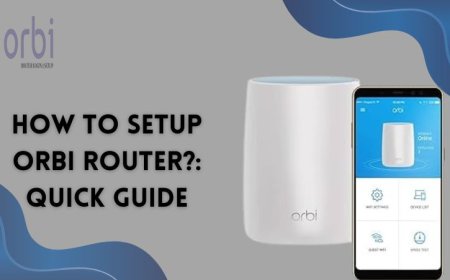The Best Tech & Learning Gifts for Kids: From Kids Laptop Toy Picks to Smart Tablets
The best tech and learning gifts for kids blend educational value with genuine fun: think interactive laptop toys with age-appropriate activities, drawing tablets that spark creativity, coding robots that teach problem-solving, and smart tablets with robust parental controls that grow alongside your child's curiosity and capabilities.

The best tech and learning gifts for kids blend educational value with genuine fun: think interactive laptop toys with age-appropriate activities, drawing tablets that spark creativity, coding robots that teach problem-solving, and smart tablets with robust parental controls that grow alongside your child's curiosity and capabilities.
Finding the perfect tech gift for children isn't about grabbing the flashiest gadget off the shelf. As someone who's spent years observing how kids interact with technology and learning tools, I've watched countless parents navigate the overwhelming world of educational electronics. The right choice can ignite a lifelong love of learning, while the wrong one ends up collecting dust in a closet within weeks.
The landscape of children's technology has evolved dramatically. We're no longer limited to simple alphabet boards or basic counting toys. Today's learning devices offer immersive experiences that teach coding, language skills, mathematics, and creative thinking, all while keeping kids genuinely engaged. But with so many options flooding the market, how do you choose something that's actually worth your investment?
Understanding Age-Appropriate Tech Choices
The foundation of selecting great tech gifts starts with understanding developmental stages. What captivates a three-year-old will bore a seven-year-old to tears, and vice versa. Young learners need devices that respond to their current abilities while gently stretching their skills.
For toddlers and preschoolers exploring toddler toys, touch-based interfaces work beautifully. They're developing fine motor skills and cause-and-effect understanding, so devices with immediate, colorful responses to their actions hit the sweet spot. A Kids Laptop Toy designed for this age group typically features large, colorful keys, simple melodies, and activities that introduce letters, numbers, and shapes through repetition and positive reinforcement.
Elementary-aged children crave more complexity. They're ready for devices that challenge their growing logical thinking and problem-solving abilities. This is when programmable robots, more sophisticated learning tablets, and interactive globe systems really shine. They want to see tangible results from their efforts, whether that's making a robot navigate an obstacle course or unlocking new levels in an educational app.
Top Interactive Learning Devices Worth Considering
Educational Laptop Toys for Young Learners
The Kids Laptop Toy category has matured significantly. Modern versions offer 20 to 60+ activities covering everything from phonics to basic mathematics, often in multiple languages. What makes these particularly valuable is their self-contained nature: no internet connection required, no in-app purchases, and no content concerns.
Look for models with adjustable difficulty levels that grow with your child. The best ones include games that reinforce what kids are learning in school, making them feel like they're playing while actually practicing valuable skills. Some feature progressive challenges where children must master one concept before moving forward, building confidence through achievable wins.
Smart Tablets Designed for Children
Unlike handing over your own tablet with crossed fingers, purpose-built kids' tablets come with comprehensive parental controls baked in. They offer curated content libraries with thousands of age-appropriate books, games, and educational apps. Many include bumper cases because, let's be honest, drops happen.
The standout feature of quality children's tablets is the parent dashboard. You can set time limits, approve or block specific content, and even see what your child is engaging with most. Some systems let you add educational goals, ensuring 30 minutes of reading before games unlock, for instance. This transforms screen time from a negotiation into a learning opportunity.
Drawing and Art Tablets
Digital drawing tablets bridge the gap between traditional art and technology. They satisfy kids' creative urges while teaching them to work with digital tools they'll use throughout their lives. LCD writing tablets offer the simplest entry point: kids can draw, erase, and draw again endlessly without paper waste. They're perfect for car trips, restaurants, or any situation where you need quiet entertainment.
More advanced graphic tablets connect to computers or work standalone, offering pressure-sensitive styluses and color palettes. Children can experiment with digital art techniques, save their creations, and even animate simple sequences. These tools are particularly valuable for kids who love art but hate the mess of traditional supplies.
Coding Robots and STEM Kits
Programmable robots have revolutionized how children learn computational thinking. These Battery Operated Toys range from simple button-programmed bots for preschoolers to sophisticated, app-controlled robots that teach actual coding languages for older kids.
The beauty of coding robots lies in their immediate feedback. Kids program a sequence, press start, and watch their instructions come to life. When the robot doesn't do what they expected, they learn to debug: troubleshooting and adjusting their code. This trial-and-error process builds resilience and logical thinking in ways that feel like play rather than work.
Features That Separate Great Tech Gifts from Disappointments
Durability Matters More Than You Think
Children and delicate electronics make uncomfortable bedfriends. The best learning devices feature reinforced construction, rubberized edges, and screens designed to withstand drops. Some even come with warranties that cover accidental damage, a worthwhile consideration for devices you're investing in long-term.
Battery Life and Power Options
Nothing deflates excitement faster than a new toy dying mid-play because it needs charging. Look for devices offering several hours of active use. Some of the smartest designs include both rechargeable battery options and the ability to use standard replaceable batteries, giving you flexibility when you're traveling or away from outlets.
Content Quality and Educational Value
Flashy graphics don't equal learning. The most effective educational technology aligns with established learning frameworks and develops specific skills progressively. Read beyond marketing claims to understand what children actually learn. Does this teach pattern recognition? Reading comprehension? Spatial reasoning? Real educational value should be clearly articulated.
Growth Potential
Kids outgrow things quickly, so gifts that adapt to growing abilities deliver better long-term value. Devices with expandable content libraries, adjustable difficulty settings, or modular components that add complexity serve children across multiple years rather than a single season.
Shopping Smart: Where and How to Find Quality Options
Shopping for kids toys online offers convenience and often better selection than physical stores, but it requires careful research. Read verified customer reviews focusing on comments about durability and whether children actually engage with the product long-term. Reviews mentioning that kids "played with it once then forgot about it" are red flags.
Compare specifications across brands. Sometimes a slightly more expensive option offers significantly better build quality or educational content, making it the better value. Consider whether the device requires subscriptions or ongoing purchases: some seemingly affordable tablets become expensive when you factor in monthly content fees.
Watch for sales during back-to-school seasons, holidays, and promotional events. Quality educational technology often goes on sale, but avoid unfamiliar brands offering deals that seem too good to be true. They usually are.
Balancing Screen Time with Active Play
Even the best educational technology shouldn't replace physical activity and hands-on exploration. The baby toys that build motor skills, outdoor play that develops coordination, and creative projects that engage multiple senses all remain crucial.
Set clear boundaries around tech use. Many experts recommend the "screen sandwich" approach: active play before and after screen time. This ensures technology enhances rather than dominates your child's day. Use timers to make transitions easier and more predictable.
Engage with your child during their tech time occasionally. Play together, ask questions about what they're doing, and show genuine interest in their digital creations. This transforms solitary screen time into bonding opportunities while helping you monitor content quality.
Making Your Final Decision
The perfect tech gift balances educational value, entertainment appeal, age-appropriateness, and your family's values around technology. Trust your instincts about what will resonate with your specific child. The kid who devours books might love an e-reader with interactive stories, while the one constantly building things might prefer a robotics kit.
Don't underestimate the power of asking other parents what's actually worked for their families. Honest recommendations from people whose children are similar ages to yours often prove more valuable than any marketing material.
Remember that the goal isn't to find the single "best" device. It's to find the right match for your child's current interests and developmental stage. A moderately-priced option that genuinely engages them beats an expensive device they ignore.
Technology can be a powerful ally in nurturing curious, capable young minds. By choosing thoughtfully and setting healthy boundaries, you're not just giving a gift. You're opening doors to discovery, creativity, and skills that will serve them for life.
Frequently Asked Questions
What age should children start using learning tablets?
Most experts suggest introducing dedicated children's tablets around age 3, with heavy parental involvement and strictly limited time. The key is choosing devices with age-appropriate content and robust parental controls that let you manage what they access.
Are laptop toys better than regular tablets for preschoolers?
Laptop toys often work better for younger children because they're simpler, more durable, and don't require internet connectivity. They offer focused learning activities without the distractions or content concerns that come with internet-connected devices.
How much should I spend on educational technology for kids?
Quality learning devices range from $30 for basic educational toys to $200+ for comprehensive tablets. Focus on value rather than price: a $50 device your child uses daily for two years beats a $150 device they abandon after a month.
Do coding toys actually teach real programming skills?
Yes, age-appropriate coding toys introduce genuine computational thinking: sequencing, logic, problem-solving, and debugging. While preschoolers won't write Python code, they're building mental frameworks that make learning text-based programming easier later.
How can I ensure screen time remains educational?
Set clear rules about device use, regularly review what your child is engaging with, balance screen time with physical activities, and occasionally participate in their digital learning. Quality devices with parental dashboards make monitoring content much easier.










































